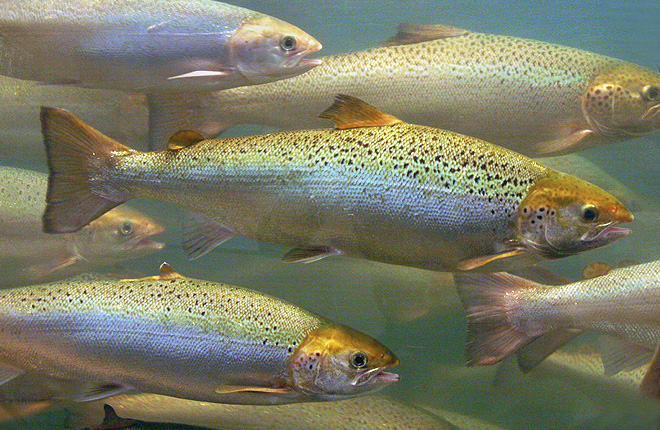Forum—ARS Aquaculture: More Than Fish Farms
If you are planning to adopt a healthier lifestyle in the New Year, adding some seafood to your diet might be a good way to start. Seafood is a highly recommended, nutritious source of protein. That’s one reason why Agricultural Research Service (ARS) scientists in laboratories around the country are focused on finding better ways to produce farm-raised seafood. Another reason is simple: We need a thriving U.S. aquaculture industry.
Aquaculture is the breeding, rearing, and harvesting of fish, shellfish, and aquatic plants, and ensuring its future is critical to our diet and our health. It also is a matter of basic economics.
U.S. marine and freshwater aquaculture production now ranks 16th worldwide, with a farmgate value approaching $1.4 billion annually. By contrast, U.S. consumers spent an estimated $91.7 billion on seafood products as recently as 2014. That’s because some 90 percent of the seafood consumed in the United States is imported. We now run a $14 billion “seafood deficit” each year, meaning we bring in that much more seafood than we export. The number of “caught” fish consumed in the United States has remained static since the 1980s, and wild-caught harvests are either maxed out or in decline. That means there is a huge opportunity to produce more seafood here in the United States.
In addition, the current Dietary Guidelines for Americans indicates that to stay healthy, most Americans should almost double their seafood intake, eating 8 ounces a week instead of 4.8 ounces. To meet that demand, it’s critical that we come up with more efficient and sustainable aquaculture production systems and methods to ensure safe, high-quality seafood.
ARS scientists at research centers across the country, with their wide-ranging areas of expertise, are uniquely equipped to play a key role in achieving those goals. They recognize the need and the opportunity, and they’re committed to increasing sustainable production of safe seafood. With that in mind, ARS’s research is focused on the types of seafood that have the greatest potential to be produced in sufficient quantities to meet our dietary needs: trout, catfish, bass, tilapia, salmon, and shellfish.
ARS is working with commercial partners and developing the latest genomic approaches, traditional breeding techniques, vaccines, and other technologies to make fish healthier, support more sustainable production systems, and increase the availability of a nutritious food source for U.S. consumers.
This issue of AgResearch spotlights ARS’s aquaculture research in the areas of fish feeds and nutrition, fish health and disease resistance, environmental aspects, and seafood safety. Because of these efforts, U.S. consumers can be assured of a plentiful supply of seafood that’s being produced in sustainable ways.
Caird Rexroad
ARS National Program Leader for Aquaculture
Beltsville, Maryland
Key Facts
- Americans should double their seafood intake.
- The United States imports 90 percent of its seafood.
- ARS aquaculture research helps producers meet U.S. demand for seafood.
- ARS studies fish genetics, nutrition, fish health, production systems, and more.
Full Story







